Playme TIO Review: Top Magnetic Mount DVR
The Chinese and Koreans have constantly surprised me since 2014. I don’t know why, but apart from a couple of pass-through devices, I discovered a normal recorder with magnetic attachment from Asian comrades only in September 2018 when I took the Korean Playme TIO for a test.
At the time of publication Playme TIO can be purchased for 9,890 rubles. At the same time, the device boasts Wi-Fi and - suddenly - support for gesture control. I do not doubt for a second that this is a hit for many years to come. For lovers of intrigue - in the Playme TIO is the most unusual external GPS that I have ever seen. And now about everything in more detail.
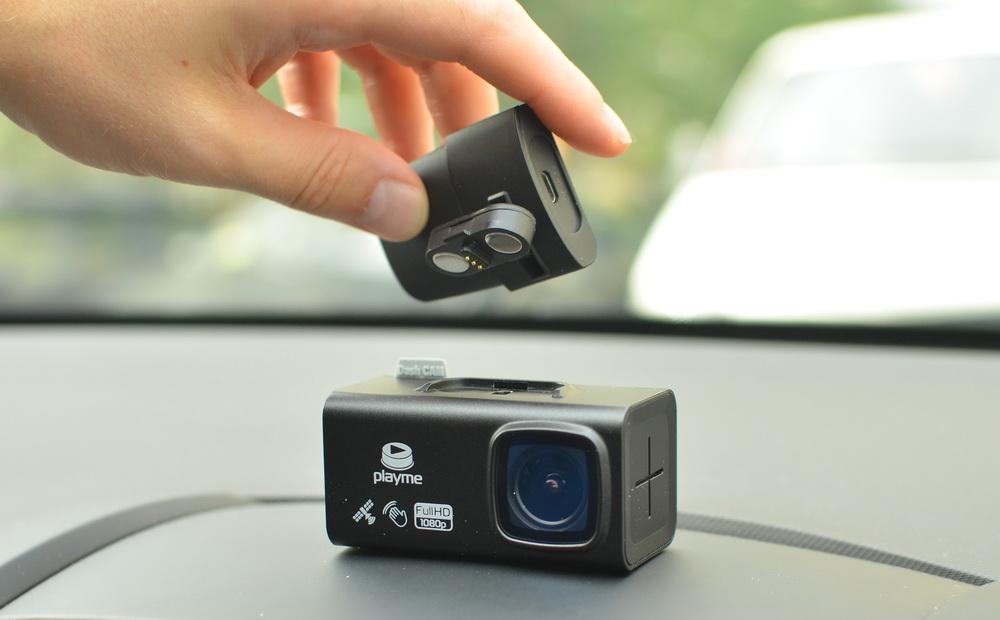
Those who wish to learn more about the Playme TIO as soon as possible I recommend to immediately proceed to the next section. I will tell a little about the producer of the hero of the review, especially since he first "lights up" on the "Habré".
The Korean company Playme was founded in 2014 by engineers from large local factories for the production of radar detectors and hybrid recorders. I will clarify that so far the main components for these devices (horn and patch antennas) are produced only and exclusively in South Korea. And nowhere else in the world. Moreover, the Koreans, though exporting components to hybrids to China, are limited to far from the best models and their technical leadership is jealously guarded.
One of the reasons for the appearance of the brand was the idea of developers to create a signature radar detector. That is, a platform that, by means of signal samples, on the one hand can accurately determine the radar model, and on the other hand, sift out sources of false alerts with high efficiency. Signature technology in the future identified the "face" of the entire market of radar detectors and has become one of the most important milestones since its inception. The competitors had to seriously strain to copy the Playme. The Playme SOFT and SILENT models with signature functions appeared in 2016, their counterparts from other manufacturers saw the light only a year later. In 2017, Playme refined the platform with anti-CAS technology to more effectively filter automotive parking sensors and monitor dead zones.
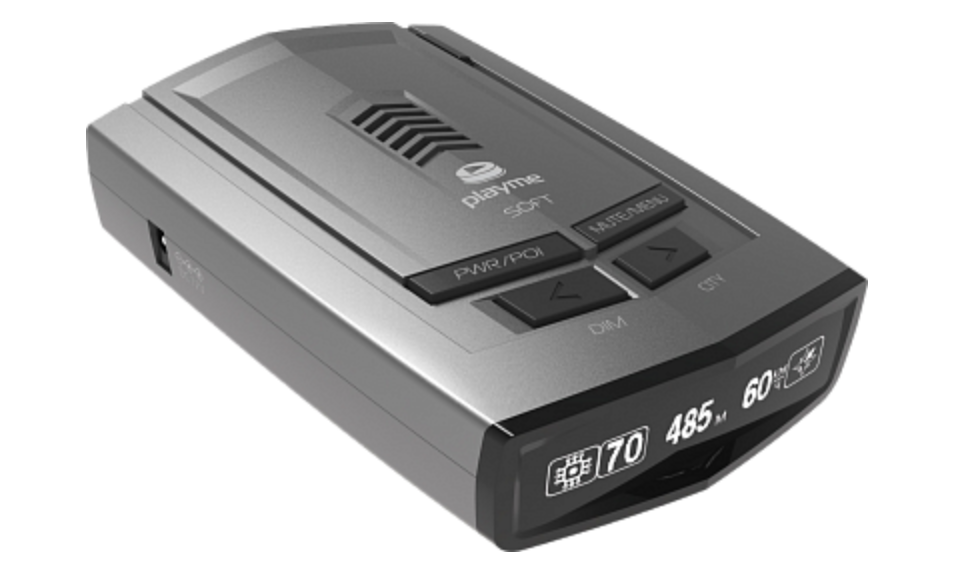
Playme soft
To date, the Playme device is one of the most titled among hybrids, radar detectors and video recorders in Russia. In general, it is difficult to doubt the brand, which in the open voting of IXBT at the end of 2017 became the winner in the category “Autoelectronics (DVRs, radar detectors, etc.”), with almost double the second place (19.6% and votes, respectively.)
From the current line of devices of the brand, I would first of all recommend paying attention to the Playme HARD 3 radar detector , which this year won in a difficult struggle in the Za Rule comparison test . Also interesting is the new Playme P570SG, flagship signature-based hybrid with SAP's proprietary anti-falsing Platform filtering technology. I note especially - this is one of the few hybrids with a frost-resistant supercapacitor. So the device can be left in the car in the winter and not worry about the reliability and performance of the device.
Among the “solo” recorders, in addition to the review hero, I will highlight the Playme ZETA that has just been on sale . The first two-chamber autoreg with the function of a parking camera and the possibility of a trouble-free installation of the rear module on the rear window of the car.
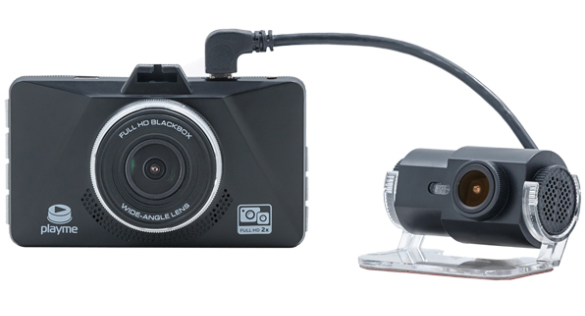
I recall the trouble of such devices - the rear module is “sharpened” for a time-consuming installation above the state number, on the visor. Manufacturers do not want to develop from scratch if not the entire rear camera, then at least a normal mount in the salon. In addition to the Playme. Also I remind you that the main feature of the parking function in such models is that the picture from the back camera is automatically displayed on the full screen of the recorder as soon as you start to back up.
The bracket has two points of magnetic contacts, between them are the teeth to transfer power to the recorder. The developers have tried to make the camera on the holder as stable as possible, so an oval recess was selected in the recorder for the contact pad. It creates resistance during sudden emergency braking, so that the device does not fly forward.
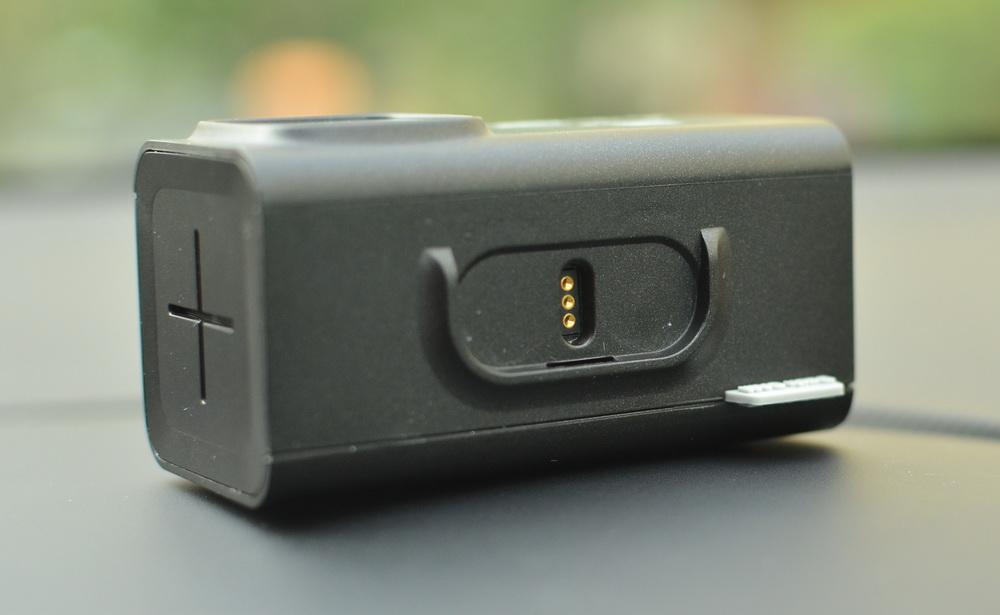
Near the back and sides of the recess, there is a “reinforced” semi-post, whose purpose is not so obvious. In my opinion, it is intended to set the fixation of the registrar if you want to turn the camera to the right or left. The position is fixed quite clearly, except that because of the protruding platform with teeth, the device looks a bit down - well, okay, the less useless ceiling of the cabin falls into the frame. In any case, it is much better than the complete inability to deploy the camera normally.
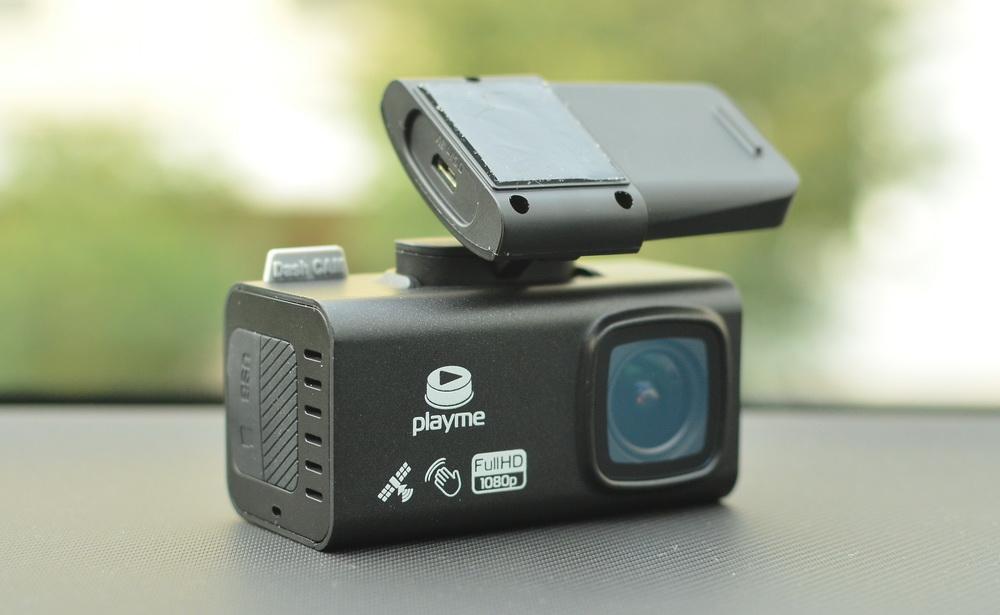
I am sure that not every user will know about it, especially without reading the instructions. As it turned out, the holder is integral. By default, an external GPS module is attached to it. Why such a construction is chosen? In the near future, Playme will offer the possibility of replacing the version with the GPS module with one with additional GLONASS support.


Exclusively my personal assumption - most likely it was originally planned to release two versions of the registrar. With GPS and, a little cheaper, without it. In registrars of a price segment similar to TIO, this usually gives a difference of about a thousand rubles. On the other hand, the ability to remove GPS in the long run also gives a chance for the possibility to install hardware more easily and get quite a budget device, but with preservation of a key magnetic chip. If this happens and Playme will fit into the framework of 6 000 rubles, I do not envy the competitors of the brand.
Magnets - strong, even on rough terrain Playme TIO just will not fly off the mount. At the same time, the user still easily removes and installs the camera instantly. By the way, the same strong magnets confidently “guide” the recorder. It is necessary to bring the device to a distance of a couple of centimeters to the bracket as the groove of the camera is clearly attracted to the mount.

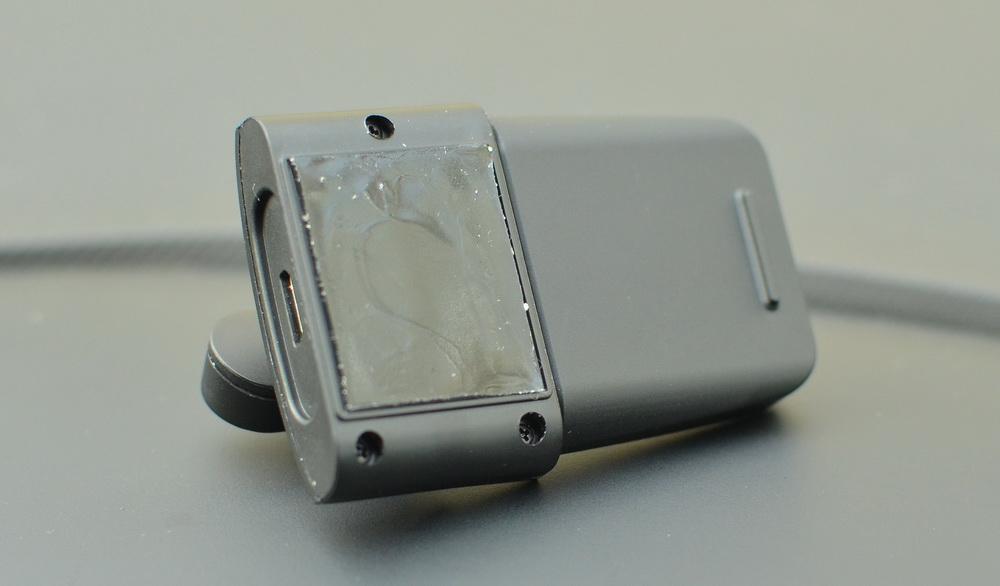
As it believes a decent modern recorder, the power supply occurs through the bracket. To the delight of readers here, which is quite rare in registrars, a microUSB connector is used, not miniUSB. The developers did not make the power adapter cable non-removable. So we have two-port charging, from which, if desired, you can charge two smartphones at once. The adapter, to put it mildly, surprised me very much. To begin, let me remind you that in the absolute majority of the charges with an additional USB port, the power is only 1 Amp, which are shared by the recorder and the rechargeable device. This can lead to incidents when, for example, the GPS receiver refuses to work in the recorder.
2.1 Ampere is offered in good charging, which is enough for more or less normal smartphone power without affecting the recorder. I did not see more of this value in the complete registrar adapters. So, in the Playme TIO - a total of 3.4 Amps! And again - for the first time I see, in addition, USB ports are clearly separated, directly with signatures! The single-amp connector is designed for autorega, and 2.4 Amperes - for other equipment. What is definitely enough for fast charging at least a smartphone, even a tablet.
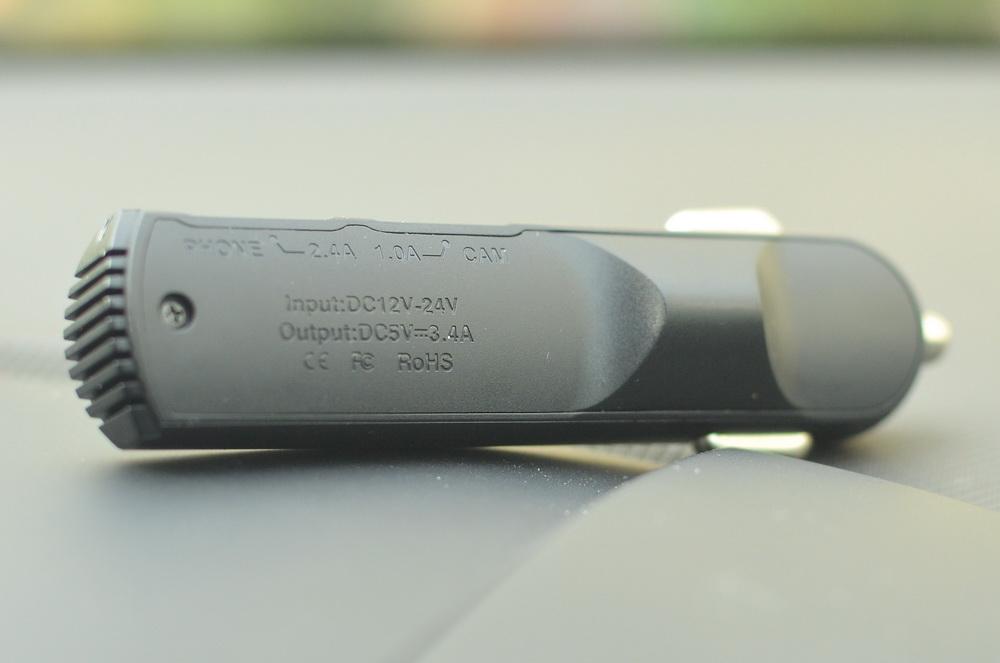
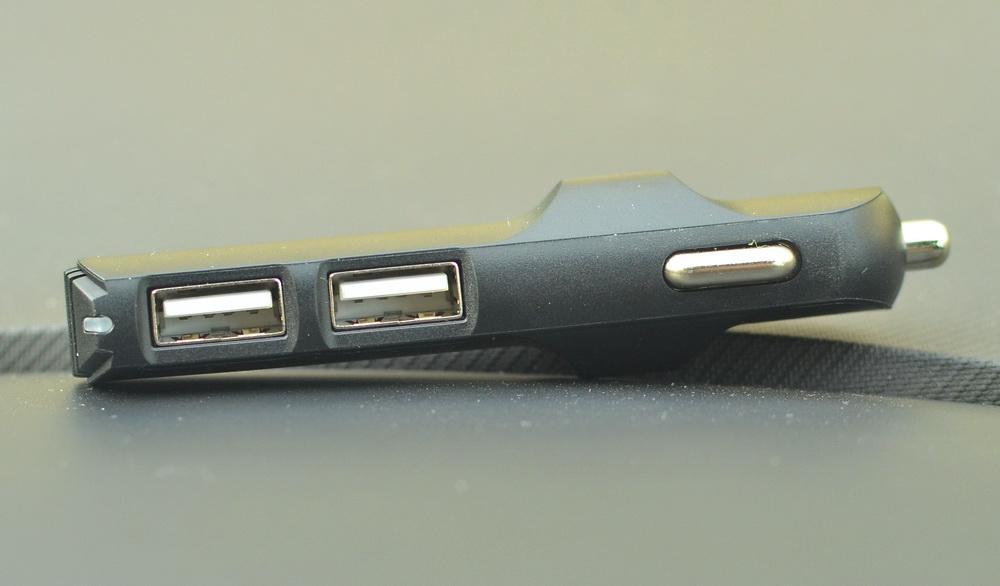
A small spoon of tar - the adapter turned out to be high, the connectors in it were placed in series. But against the background of the charging power, you can put up with it.
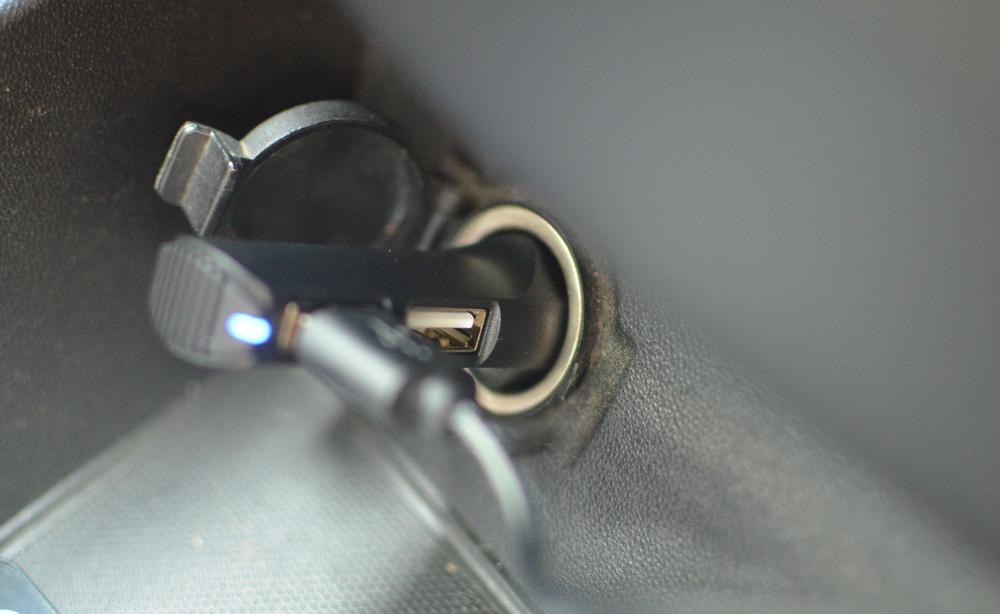
Also pleased with the power cable. For some reason, almost always, developers forget about such a penny moment as ferrite rings, which prevent potential pickups on the radio. In TIO, as you can see from the photo, complete order with rings.
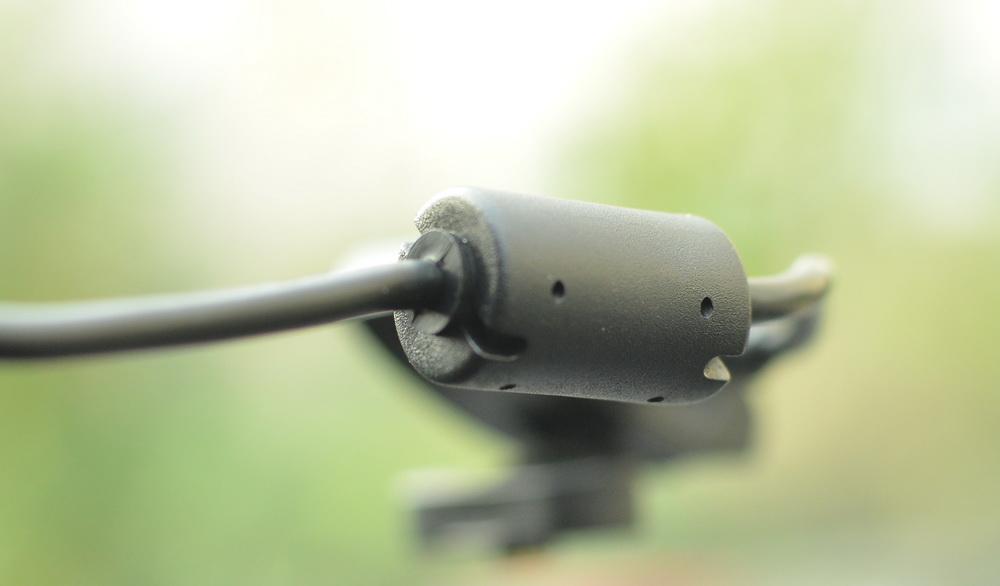
I will not devote a separate section of the configuration, since it has already been touched almost completely. Is that I mention the presence of instructions with color glossy printing and warranty card.
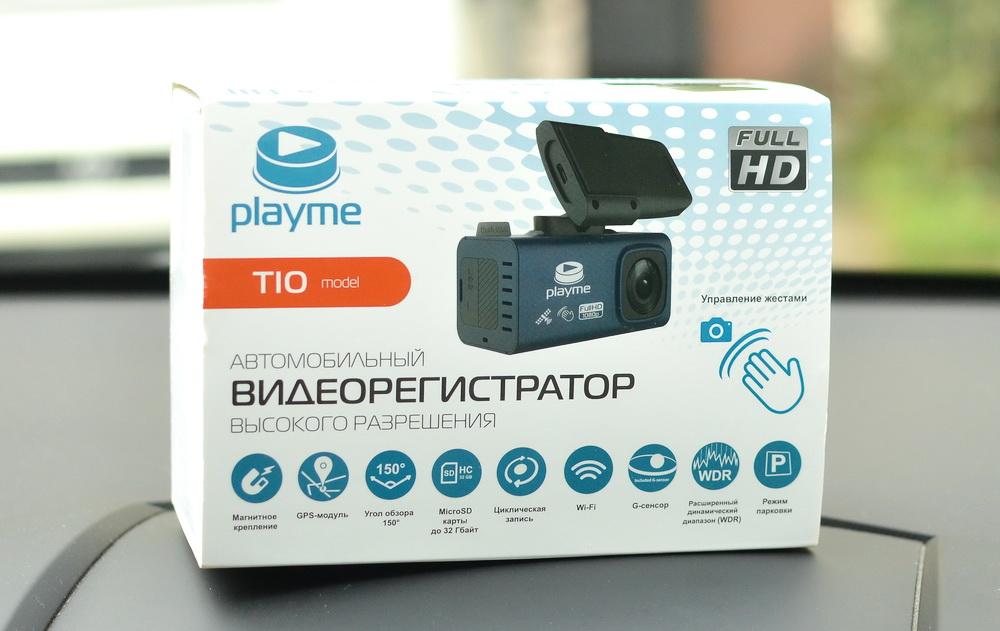
The organization of user interaction with the registrar turned out to be very original. Analogues immediately do not even remember. Push-button control assigned exactly two keys. Yes - exactly two, despite the fact that here we are offered, for example, to enter the full menu, wander through it and choose different settings. The functionality of the buttons is based on short and long pressings. This somewhat complicates the first acquaintance, it is unlikely that we will be able to do without instructions. But we are talking about a maximum of five extra minutes to learn all the wisdom of the recorder's button control.
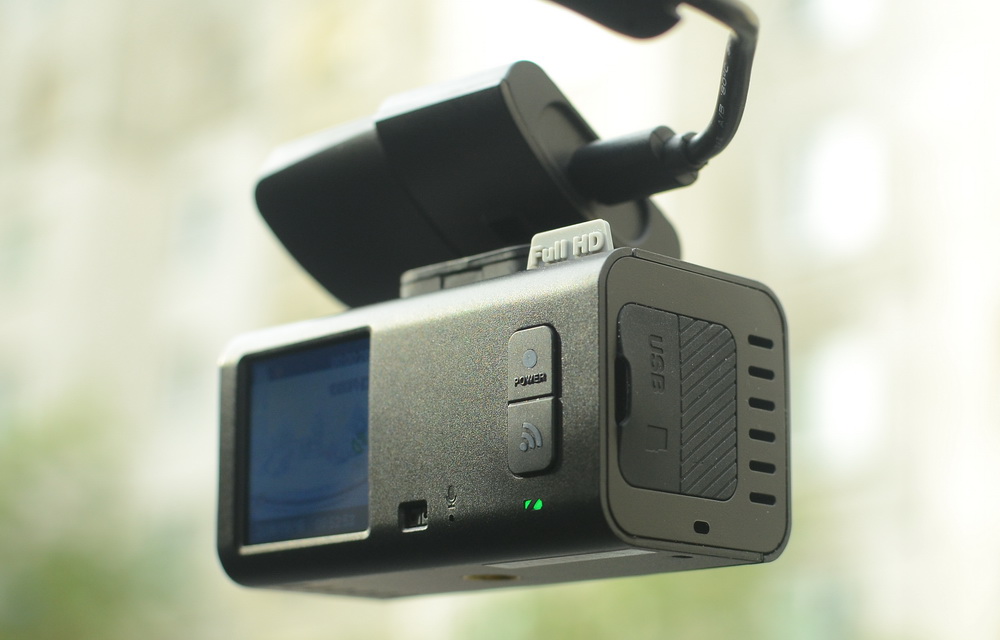
Other manufacturers note - learn how to fully manage and navigate the settings fit in just two keys.
The indicators are built into the buttons directly, the upper key shows the current shooting by flashing, the lower one signals the state of Wi-Fi. By the way, at the bottom of the case, under the keys is a power status diode. A reasonable question is how to deal with quick options such as manual emergency file marking, microphone on / off and so on? This issue was resolved in the most advanced and efficient way. In the registrar introduced a "gesture detector". The fact that I had previously observed in avtogakh except for top models for about 20,000 rubles or hybrids for 17,000 rubles. Let me remind you, the Playme TIO will cost a little less than 10,000 rubles. So also on a decent radar detector, if desired, will remain.
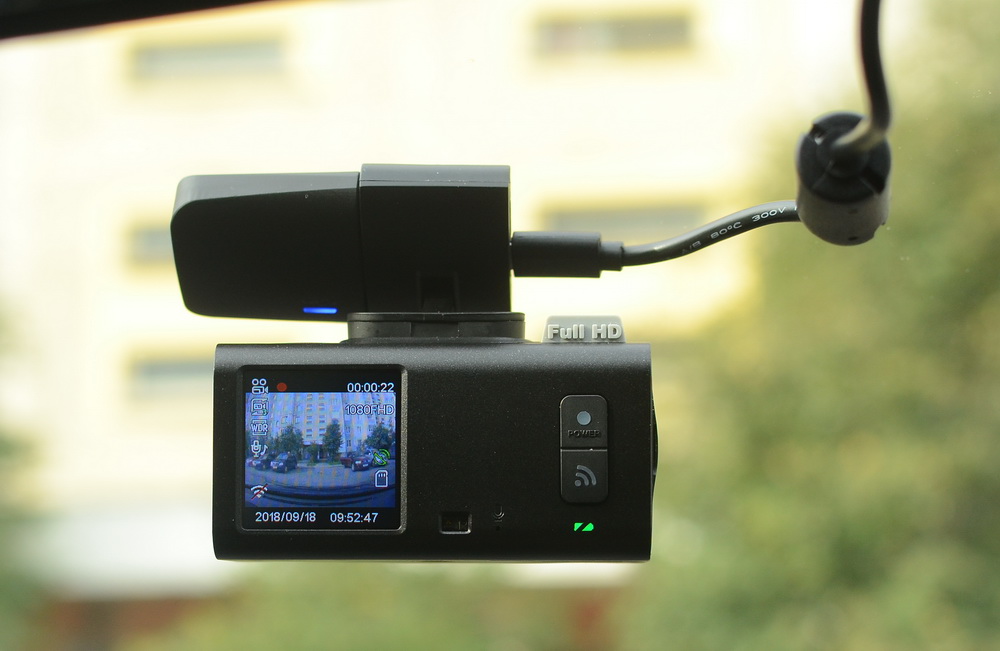
In my memory in hybrids such a sensor is needed to make the device quickly silenced during the next audible / voice alert. In the Playme TIO, there is a dual function - at the same time a still image is taken and the current video file is protected from deletion. I have two hands in favor of this approach. In the overwhelming majority of recorders, a separate button is responsible for marking the video as protected, “emergency”. This is useful in case of an accident or when something important has hit the lens like an accident with cars in front of you. Conveniently - pressed the key and you will be sure for sure that the video will not overwrite the subsequent cyclic shooting. There is only one problem - most often the “emergency” button is either unmarked or marked with a very small signature. In a stressful situation, it’s not a fact that you immediately figure out where to press.
Therefore, I am impressed by the extremely intuitive approach of Playme. Spent your hand - everything, be calm, the video is protected. Some manufacturers with a similar purpose attach external, sometimes even wireless SOS buttons. Clicked - and got an emergency mark file. But, anyway, the solution integrated directly into the recorder is still more convenient.
Now about Wi-Fi. In the best traditions of premium Korean models for all the same about 20,000 rubles, by default, wireless is turned off. It is activated manually by pressing the corresponding button. I'm not sure that this is the right step from a security point of view, but not only the network name, but also the access password is immediately displayed on the recorder screen. Although it is clear that this is a step towards the average user, who, perhaps, searching for a password makes you open the instruction only once.
After activating the Wi-Fi access point is created quickly, in just ten seconds. To connect to the logger you will need to download and install the RoadCam App. On the main screen of the program, the current video from the camera is shown, start / stop recording buttons are available, switching to settings or viewing photos and videos already captured. An important feature, the absence of which would depreciate Wi-Fi, is the ability to stream video, without the need to download the video entirely on a smartphone.
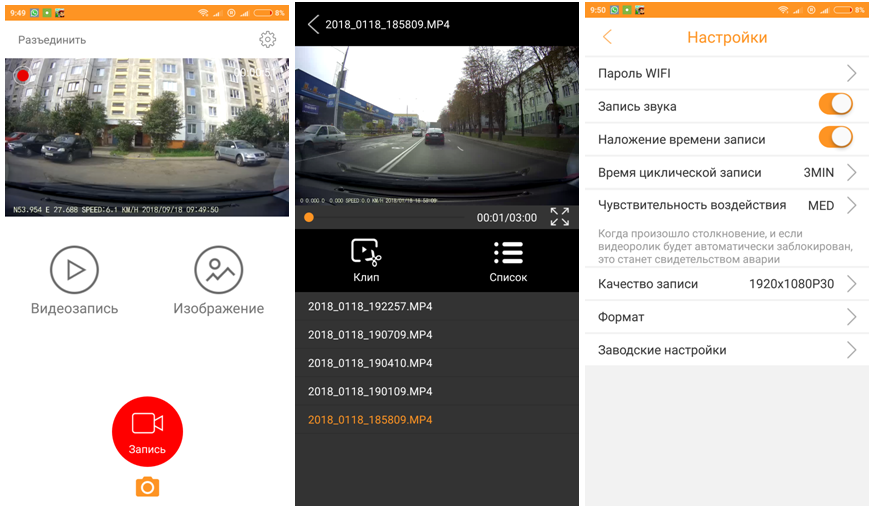
By the way, in the recorders with shooting 1440p in the presence of Wi-Fi recording goes in two streams - along with the original duplicate HD-videos are saved. They are shown on the smartphone, because not every smartphone successfully “digests” 1440p video with a bitrate of 20 Mbps. In TIO with Full HD at 12 Mbps, duplicate lightweight files are not required, so space on the memory card is not wasted. I can not call my “test park” big, but Xiaomi Redmo Note 4, Honor 7 and Innos D6000 played videos without any lags and problems.
Alas, very few settings are available for Wi-Fi, although there are very few of them in the recorder’s menu. What is rather pleasing, since at least half of registrars with a scattering of options usually have a decorative character and are never really used. In addition, the set on Wi-Fi is such that I would have made it almost the gold standard, so as not to overstrain the average consumer. Controlling the microphone, the resolution of the shooting, the duration of the commercials, the formatting of the card - in total even less than ten points, but not a single one. All that is required for the initial individual configuration.
The model is made of matte plastic, the build quality is good - nothing backlash or creaks. Appearance I would describe as neutral.
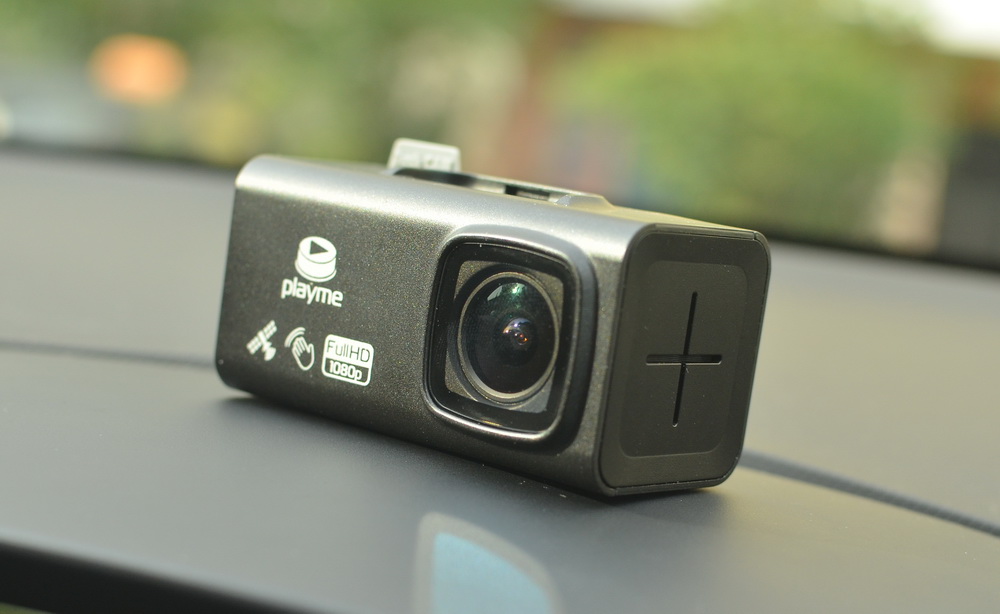
Not at all, without a graceful stroke, this role was assumed by the cross-shaped slot on the side, behind which the speaker is hidden. Before getting the device in hand, I even assumed that the buttons were so intricately labeled.
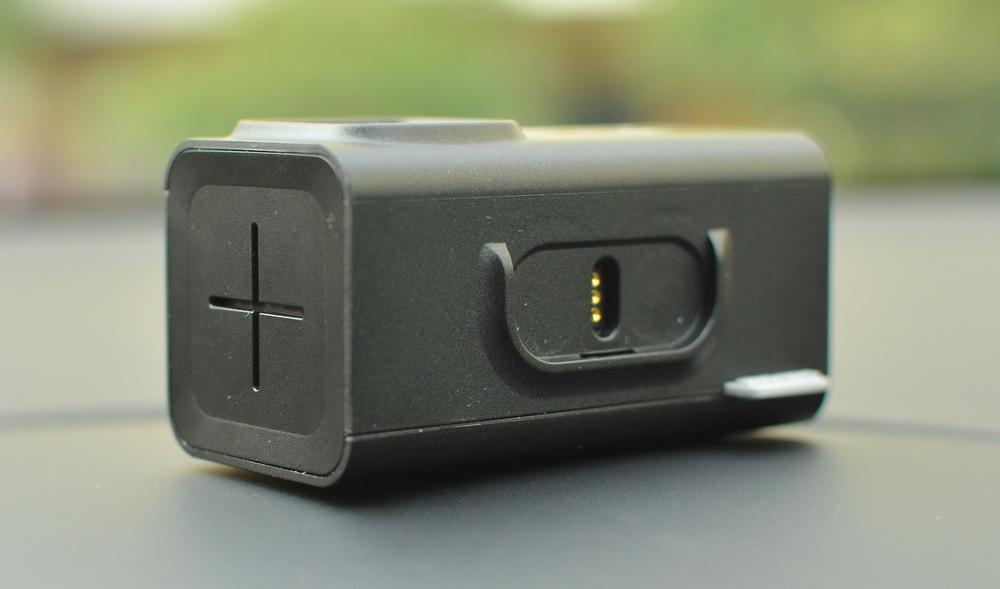
From the front there is nothing special - a couple of icons and a slightly protruding protective lens glass.
On the left side is another plus in the TIO piggy bank. The microUSB connector and memory card slot are tightly covered with a rubber stopper. I think this is more of an aesthetic solution, because if you regard it as protection from dust, there are questions about multiple holes for cooling the inside of the recorder.
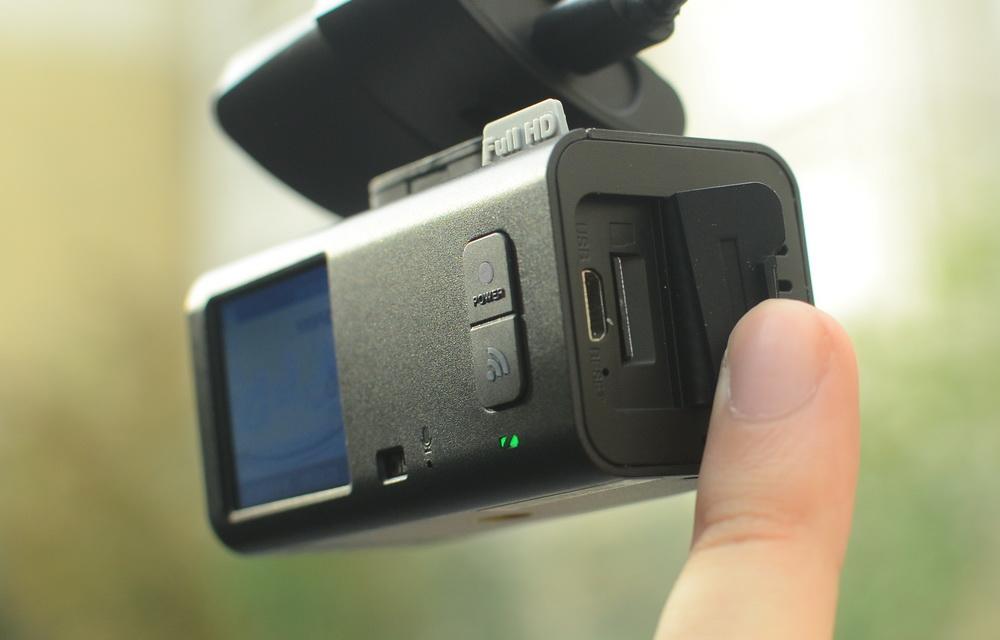
From the rear is a 1.4-inch screen. Yes, quite small. What is essentially difficult to attribute to the minuses. You will still watch the video on your smartphone. And you will obviously become changing the settings, keeping the recorder in hand. I didn’t have a desire to bring the display straight to my eyes - there was enough distance at which I usually hold a smartphone when using it. A little to the right of the screen is a gesture sensor, a microphone hole and two buttons with built-in LED indicators.
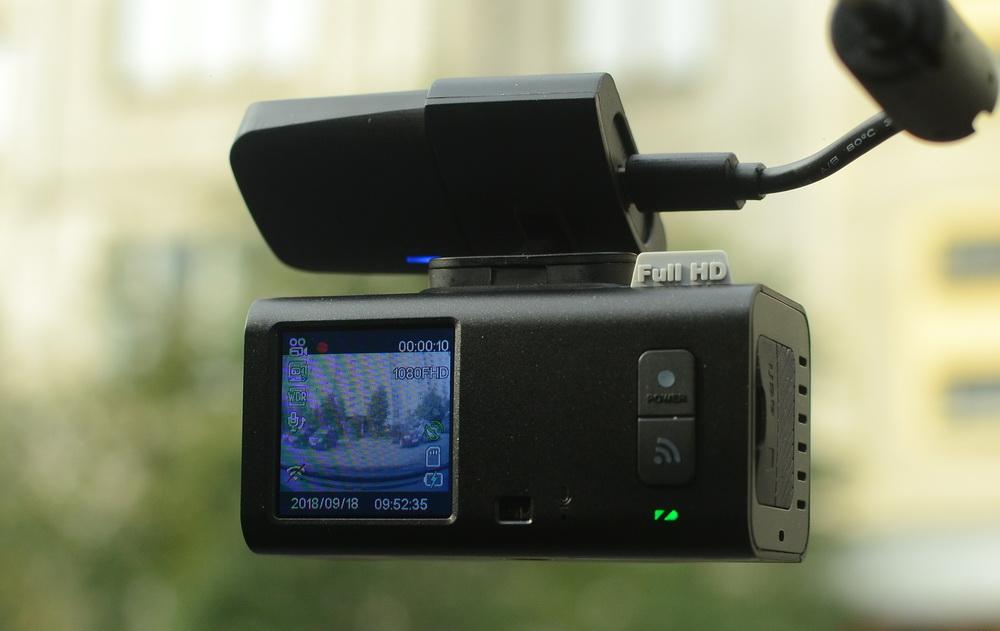
Below is a recess under the threaded bracket. So the manufacturer hints to us that if desired, the recorder can be used as a video camera on a tripod.
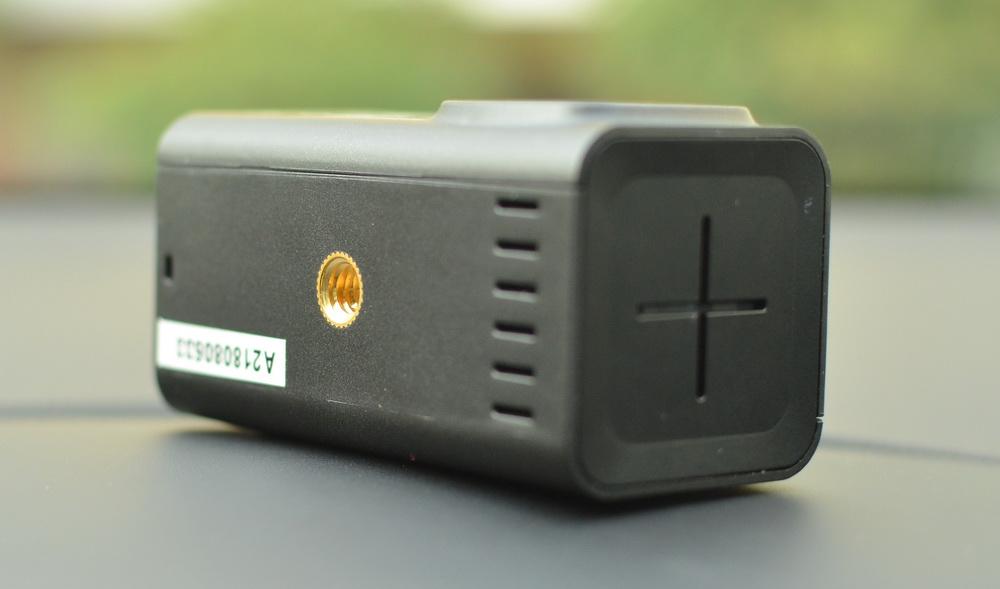
From above we observe a platform for magnetic attachment and a rubber tag, on one side of which it is written “Full HD”, and on the other side is “Dash CAM”.
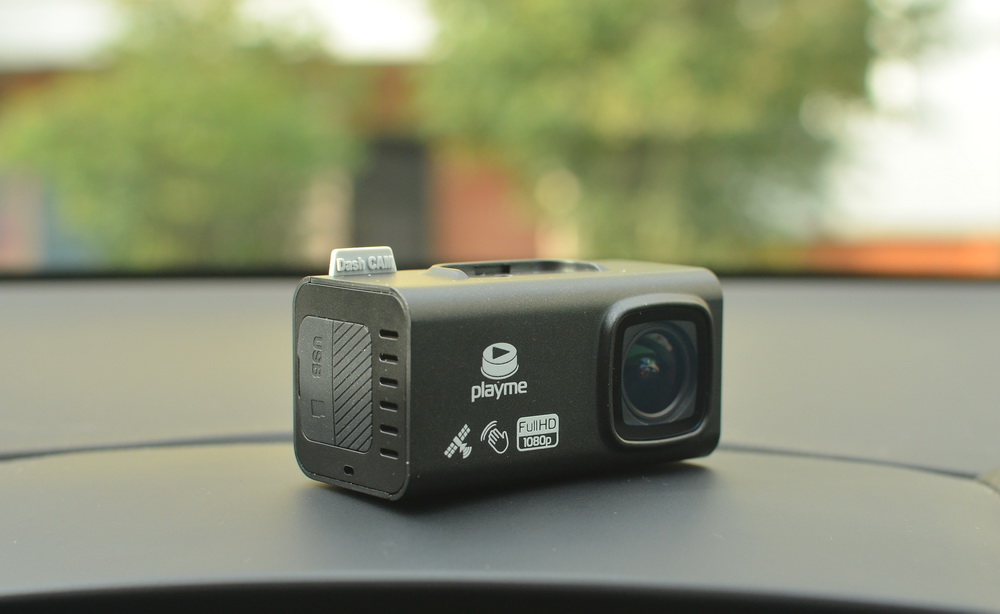
The recorder is very compact. Easily hiding behind the rearview mirror, does not take much space in the glove compartment.
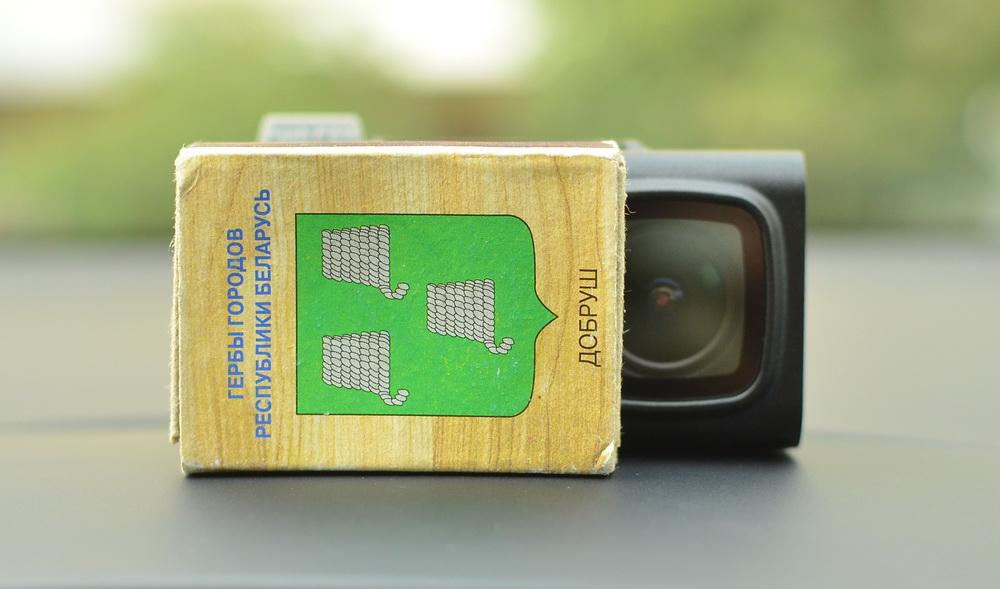
The recorder at the entrance has a lens with six glass lenses and an F / 2.0 diaphragm, which is normal and even mandatory for the price of the model. The Japanese Sony IMX323 matrix is a good solution that has been found in good quality recorders for years. Another thing - do not forget that in the first place is always the straightforwardness of the developers. I have even seen frankly failing solutions based on IMX323. Looking ahead, I note that just Playme TIO is one of the worthy examples of the use of this CMOS sensor.
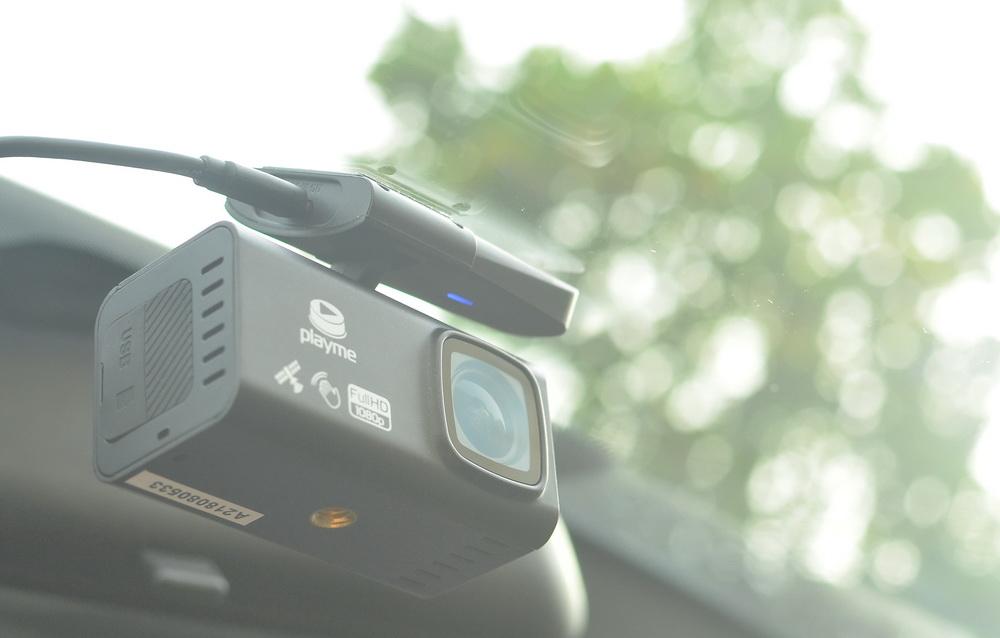
Unfortunately, I was not able to get the datasheet on the installed NoveTek NTK96658 processor. But already by numbering in the context of the NovaTek solution line, it is clear that this is a near-solution solution. Previously, the model was seen literally in a couple-three recorders.
The viewing angle on the diagonal is 150 degrees, three lanes of road and a little verge fall into the frame. Because of the wide angle at the edges of the picture, objects are slightly bent, but this is not striking.
Recording is done in 3, 5 or 10 minutes. Over the video, you can impose stamps of coordinates, speed, date and time.
In addition to the main, there are two more shooting modes available. Parking record means that the recorder will save 30-second rollers when the G-sensor is triggered. This can be useful if unsuccessfully parking motorist touched your car and hurried to hide from the scene. The special charm of the regime is that its work does not require constant power. When you unplug the camera from the cigarette lighter, the model goes into sleep mode and absorbs only the energy of the built-in 420 mAh battery. According to my measurements, the battery lasts, for example, almost half an hour of continuous shooting. Also there is a more familiar to the parking record mode - the recognition of movement in the frame
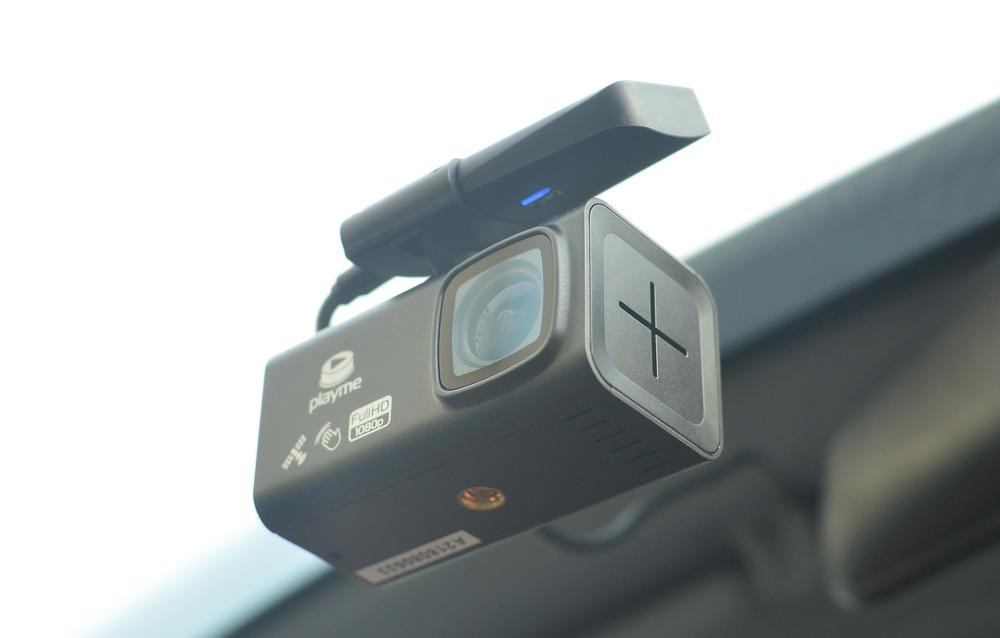
Shooting is conducted in the resolution of 1920x1080 pixels with a frequency of 30 fps. The quality of daytime shooting is high and fully corresponds to the rather high price of the model. Gosnomera well viewed at a distance of approximately 12 meters. No white balance errors, color rendition without distortion. Soft, but quickly, light fluctuations are fulfilled when leaving the tunnel or from under the bridge. I suppose there is some contribution made by the default WDR.
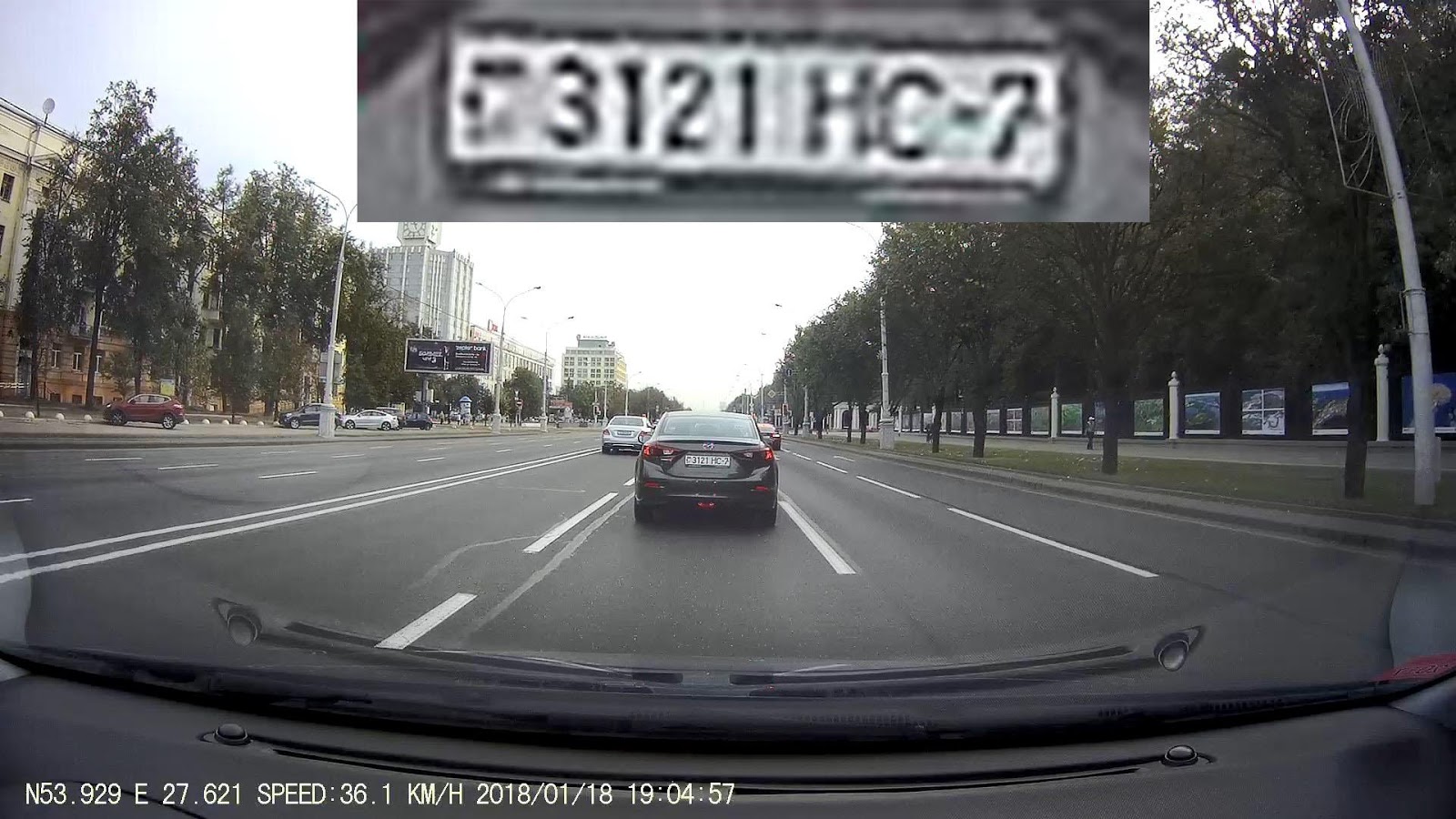
At night, shooting is also in perfect order - the picture does not flood the headlights, there are practically no illuminated state numbers for passing cars.

In general, the light sources are well developed, this is noticeable when passing by the mall and the national library, even the colors of the backlight are clearly visible everywhere.

The main thing that worried me in the Playme TIO is whether the model will not be in a situation where the main focus is shifted towards the model's superfly (in this case magnetic attachment) to the detriment of the recording quality. Such cases, alas, occur very often. Fortunately, TIO did not disappoint and no doubt is ready to compete in the level of shooting with other recorders with a price of about 10,000 rubles.
Playme TIO is probably the best for the next year or two with a magnetic mount in terms of price and performance. With a price of 9,890 rubles, there is nothing to complain about: a compact case, a thought-out bracket, wide functionality (Wi-Fi, gesture control), innovative control of the device with just two buttons on the case. Powerful charging, the analogs of which I have not seen in other recorders. In the end, high-quality shooting, regardless of the weather and time of day.
In the past few months, about 70% of users who applied to me at schub.alexandr@yandex.ru asked about registrars up to 10-12 thousand rubles. I am stating a fact - for such motorists, Playme TIO will now be in my personal top recommended registrars for purchase.
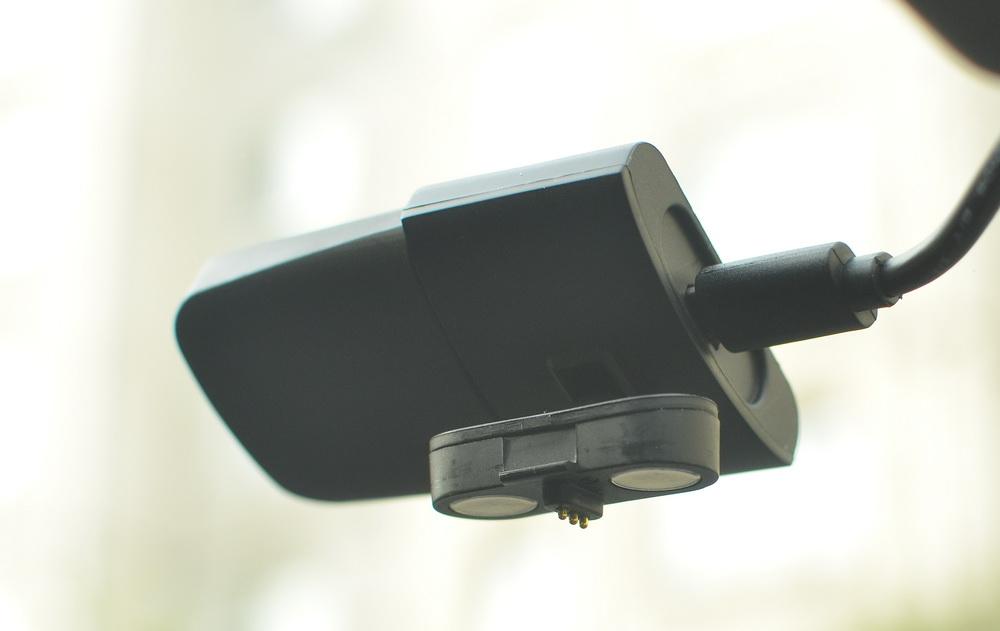
PSI remind you - regarding the choice of registrars or other issues related to automotive registrars, do not hesitate to contact me at my personal e-mail schub.alexandr@yandex.ru .
PPS Regardless of the type of electronics, I always welcome short, capacious names. Sometimes you wonder why manufacturers try to maximize the “recognition” of the model. By the way, these are the meanings of the word "TIO" given by Wikipedia. What do you think, which one is better suited to the Playme recorder?
At the time of publication Playme TIO can be purchased for 9,890 rubles. At the same time, the device boasts Wi-Fi and - suddenly - support for gesture control. I do not doubt for a second that this is a hit for many years to come. For lovers of intrigue - in the Playme TIO is the most unusual external GPS that I have ever seen. And now about everything in more detail.

About brand
Those who wish to learn more about the Playme TIO as soon as possible I recommend to immediately proceed to the next section. I will tell a little about the producer of the hero of the review, especially since he first "lights up" on the "Habré".
The Korean company Playme was founded in 2014 by engineers from large local factories for the production of radar detectors and hybrid recorders. I will clarify that so far the main components for these devices (horn and patch antennas) are produced only and exclusively in South Korea. And nowhere else in the world. Moreover, the Koreans, though exporting components to hybrids to China, are limited to far from the best models and their technical leadership is jealously guarded.
One of the reasons for the appearance of the brand was the idea of developers to create a signature radar detector. That is, a platform that, by means of signal samples, on the one hand can accurately determine the radar model, and on the other hand, sift out sources of false alerts with high efficiency. Signature technology in the future identified the "face" of the entire market of radar detectors and has become one of the most important milestones since its inception. The competitors had to seriously strain to copy the Playme. The Playme SOFT and SILENT models with signature functions appeared in 2016, their counterparts from other manufacturers saw the light only a year later. In 2017, Playme refined the platform with anti-CAS technology to more effectively filter automotive parking sensors and monitor dead zones.

Playme soft
To date, the Playme device is one of the most titled among hybrids, radar detectors and video recorders in Russia. In general, it is difficult to doubt the brand, which in the open voting of IXBT at the end of 2017 became the winner in the category “Autoelectronics (DVRs, radar detectors, etc.”), with almost double the second place (19.6% and votes, respectively.)
From the current line of devices of the brand, I would first of all recommend paying attention to the Playme HARD 3 radar detector , which this year won in a difficult struggle in the Za Rule comparison test . Also interesting is the new Playme P570SG, flagship signature-based hybrid with SAP's proprietary anti-falsing Platform filtering technology. I note especially - this is one of the few hybrids with a frost-resistant supercapacitor. So the device can be left in the car in the winter and not worry about the reliability and performance of the device.
Among the “solo” recorders, in addition to the review hero, I will highlight the Playme ZETA that has just been on sale . The first two-chamber autoreg with the function of a parking camera and the possibility of a trouble-free installation of the rear module on the rear window of the car.

I recall the trouble of such devices - the rear module is “sharpened” for a time-consuming installation above the state number, on the visor. Manufacturers do not want to develop from scratch if not the entire rear camera, then at least a normal mount in the salon. In addition to the Playme. Also I remind you that the main feature of the parking function in such models is that the picture from the back camera is automatically displayed on the full screen of the recorder as soon as you start to back up.
Mounting and installation
The bracket has two points of magnetic contacts, between them are the teeth to transfer power to the recorder. The developers have tried to make the camera on the holder as stable as possible, so an oval recess was selected in the recorder for the contact pad. It creates resistance during sudden emergency braking, so that the device does not fly forward.

Near the back and sides of the recess, there is a “reinforced” semi-post, whose purpose is not so obvious. In my opinion, it is intended to set the fixation of the registrar if you want to turn the camera to the right or left. The position is fixed quite clearly, except that because of the protruding platform with teeth, the device looks a bit down - well, okay, the less useless ceiling of the cabin falls into the frame. In any case, it is much better than the complete inability to deploy the camera normally.

I am sure that not every user will know about it, especially without reading the instructions. As it turned out, the holder is integral. By default, an external GPS module is attached to it. Why such a construction is chosen? In the near future, Playme will offer the possibility of replacing the version with the GPS module with one with additional GLONASS support.


Exclusively my personal assumption - most likely it was originally planned to release two versions of the registrar. With GPS and, a little cheaper, without it. In registrars of a price segment similar to TIO, this usually gives a difference of about a thousand rubles. On the other hand, the ability to remove GPS in the long run also gives a chance for the possibility to install hardware more easily and get quite a budget device, but with preservation of a key magnetic chip. If this happens and Playme will fit into the framework of 6 000 rubles, I do not envy the competitors of the brand.
Magnets - strong, even on rough terrain Playme TIO just will not fly off the mount. At the same time, the user still easily removes and installs the camera instantly. By the way, the same strong magnets confidently “guide” the recorder. It is necessary to bring the device to a distance of a couple of centimeters to the bracket as the groove of the camera is clearly attracted to the mount.


As it believes a decent modern recorder, the power supply occurs through the bracket. To the delight of readers here, which is quite rare in registrars, a microUSB connector is used, not miniUSB. The developers did not make the power adapter cable non-removable. So we have two-port charging, from which, if desired, you can charge two smartphones at once. The adapter, to put it mildly, surprised me very much. To begin, let me remind you that in the absolute majority of the charges with an additional USB port, the power is only 1 Amp, which are shared by the recorder and the rechargeable device. This can lead to incidents when, for example, the GPS receiver refuses to work in the recorder.
2.1 Ampere is offered in good charging, which is enough for more or less normal smartphone power without affecting the recorder. I did not see more of this value in the complete registrar adapters. So, in the Playme TIO - a total of 3.4 Amps! And again - for the first time I see, in addition, USB ports are clearly separated, directly with signatures! The single-amp connector is designed for autorega, and 2.4 Amperes - for other equipment. What is definitely enough for fast charging at least a smartphone, even a tablet.


A small spoon of tar - the adapter turned out to be high, the connectors in it were placed in series. But against the background of the charging power, you can put up with it.

Also pleased with the power cable. For some reason, almost always, developers forget about such a penny moment as ferrite rings, which prevent potential pickups on the radio. In TIO, as you can see from the photo, complete order with rings.

I will not devote a separate section of the configuration, since it has already been touched almost completely. Is that I mention the presence of instructions with color glossy printing and warranty card.

Control
The organization of user interaction with the registrar turned out to be very original. Analogues immediately do not even remember. Push-button control assigned exactly two keys. Yes - exactly two, despite the fact that here we are offered, for example, to enter the full menu, wander through it and choose different settings. The functionality of the buttons is based on short and long pressings. This somewhat complicates the first acquaintance, it is unlikely that we will be able to do without instructions. But we are talking about a maximum of five extra minutes to learn all the wisdom of the recorder's button control.

Other manufacturers note - learn how to fully manage and navigate the settings fit in just two keys.
The indicators are built into the buttons directly, the upper key shows the current shooting by flashing, the lower one signals the state of Wi-Fi. By the way, at the bottom of the case, under the keys is a power status diode. A reasonable question is how to deal with quick options such as manual emergency file marking, microphone on / off and so on? This issue was resolved in the most advanced and efficient way. In the registrar introduced a "gesture detector". The fact that I had previously observed in avtogakh except for top models for about 20,000 rubles or hybrids for 17,000 rubles. Let me remind you, the Playme TIO will cost a little less than 10,000 rubles. So also on a decent radar detector, if desired, will remain.

In my memory in hybrids such a sensor is needed to make the device quickly silenced during the next audible / voice alert. In the Playme TIO, there is a dual function - at the same time a still image is taken and the current video file is protected from deletion. I have two hands in favor of this approach. In the overwhelming majority of recorders, a separate button is responsible for marking the video as protected, “emergency”. This is useful in case of an accident or when something important has hit the lens like an accident with cars in front of you. Conveniently - pressed the key and you will be sure for sure that the video will not overwrite the subsequent cyclic shooting. There is only one problem - most often the “emergency” button is either unmarked or marked with a very small signature. In a stressful situation, it’s not a fact that you immediately figure out where to press.
Therefore, I am impressed by the extremely intuitive approach of Playme. Spent your hand - everything, be calm, the video is protected. Some manufacturers with a similar purpose attach external, sometimes even wireless SOS buttons. Clicked - and got an emergency mark file. But, anyway, the solution integrated directly into the recorder is still more convenient.
Now about Wi-Fi. In the best traditions of premium Korean models for all the same about 20,000 rubles, by default, wireless is turned off. It is activated manually by pressing the corresponding button. I'm not sure that this is the right step from a security point of view, but not only the network name, but also the access password is immediately displayed on the recorder screen. Although it is clear that this is a step towards the average user, who, perhaps, searching for a password makes you open the instruction only once.
After activating the Wi-Fi access point is created quickly, in just ten seconds. To connect to the logger you will need to download and install the RoadCam App. On the main screen of the program, the current video from the camera is shown, start / stop recording buttons are available, switching to settings or viewing photos and videos already captured. An important feature, the absence of which would depreciate Wi-Fi, is the ability to stream video, without the need to download the video entirely on a smartphone.

By the way, in the recorders with shooting 1440p in the presence of Wi-Fi recording goes in two streams - along with the original duplicate HD-videos are saved. They are shown on the smartphone, because not every smartphone successfully “digests” 1440p video with a bitrate of 20 Mbps. In TIO with Full HD at 12 Mbps, duplicate lightweight files are not required, so space on the memory card is not wasted. I can not call my “test park” big, but Xiaomi Redmo Note 4, Honor 7 and Innos D6000 played videos without any lags and problems.
Alas, very few settings are available for Wi-Fi, although there are very few of them in the recorder’s menu. What is rather pleasing, since at least half of registrars with a scattering of options usually have a decorative character and are never really used. In addition, the set on Wi-Fi is such that I would have made it almost the gold standard, so as not to overstrain the average consumer. Controlling the microphone, the resolution of the shooting, the duration of the commercials, the formatting of the card - in total even less than ten points, but not a single one. All that is required for the initial individual configuration.
Design
The model is made of matte plastic, the build quality is good - nothing backlash or creaks. Appearance I would describe as neutral.

Not at all, without a graceful stroke, this role was assumed by the cross-shaped slot on the side, behind which the speaker is hidden. Before getting the device in hand, I even assumed that the buttons were so intricately labeled.

From the front there is nothing special - a couple of icons and a slightly protruding protective lens glass.
On the left side is another plus in the TIO piggy bank. The microUSB connector and memory card slot are tightly covered with a rubber stopper. I think this is more of an aesthetic solution, because if you regard it as protection from dust, there are questions about multiple holes for cooling the inside of the recorder.

From the rear is a 1.4-inch screen. Yes, quite small. What is essentially difficult to attribute to the minuses. You will still watch the video on your smartphone. And you will obviously become changing the settings, keeping the recorder in hand. I didn’t have a desire to bring the display straight to my eyes - there was enough distance at which I usually hold a smartphone when using it. A little to the right of the screen is a gesture sensor, a microphone hole and two buttons with built-in LED indicators.

Below is a recess under the threaded bracket. So the manufacturer hints to us that if desired, the recorder can be used as a video camera on a tripod.

From above we observe a platform for magnetic attachment and a rubber tag, on one side of which it is written “Full HD”, and on the other side is “Dash CAM”.

The recorder is very compact. Easily hiding behind the rearview mirror, does not take much space in the glove compartment.

Videography
The recorder at the entrance has a lens with six glass lenses and an F / 2.0 diaphragm, which is normal and even mandatory for the price of the model. The Japanese Sony IMX323 matrix is a good solution that has been found in good quality recorders for years. Another thing - do not forget that in the first place is always the straightforwardness of the developers. I have even seen frankly failing solutions based on IMX323. Looking ahead, I note that just Playme TIO is one of the worthy examples of the use of this CMOS sensor.

Unfortunately, I was not able to get the datasheet on the installed NoveTek NTK96658 processor. But already by numbering in the context of the NovaTek solution line, it is clear that this is a near-solution solution. Previously, the model was seen literally in a couple-three recorders.
The viewing angle on the diagonal is 150 degrees, three lanes of road and a little verge fall into the frame. Because of the wide angle at the edges of the picture, objects are slightly bent, but this is not striking.
Recording is done in 3, 5 or 10 minutes. Over the video, you can impose stamps of coordinates, speed, date and time.
In addition to the main, there are two more shooting modes available. Parking record means that the recorder will save 30-second rollers when the G-sensor is triggered. This can be useful if unsuccessfully parking motorist touched your car and hurried to hide from the scene. The special charm of the regime is that its work does not require constant power. When you unplug the camera from the cigarette lighter, the model goes into sleep mode and absorbs only the energy of the built-in 420 mAh battery. According to my measurements, the battery lasts, for example, almost half an hour of continuous shooting. Also there is a more familiar to the parking record mode - the recognition of movement in the frame

Shooting is conducted in the resolution of 1920x1080 pixels with a frequency of 30 fps. The quality of daytime shooting is high and fully corresponds to the rather high price of the model. Gosnomera well viewed at a distance of approximately 12 meters. No white balance errors, color rendition without distortion. Soft, but quickly, light fluctuations are fulfilled when leaving the tunnel or from under the bridge. I suppose there is some contribution made by the default WDR.

At night, shooting is also in perfect order - the picture does not flood the headlights, there are practically no illuminated state numbers for passing cars.

In general, the light sources are well developed, this is noticeable when passing by the mall and the national library, even the colors of the backlight are clearly visible everywhere.

The main thing that worried me in the Playme TIO is whether the model will not be in a situation where the main focus is shifted towards the model's superfly (in this case magnetic attachment) to the detriment of the recording quality. Such cases, alas, occur very often. Fortunately, TIO did not disappoint and no doubt is ready to compete in the level of shooting with other recorders with a price of about 10,000 rubles.
Conclusion
Playme TIO is probably the best for the next year or two with a magnetic mount in terms of price and performance. With a price of 9,890 rubles, there is nothing to complain about: a compact case, a thought-out bracket, wide functionality (Wi-Fi, gesture control), innovative control of the device with just two buttons on the case. Powerful charging, the analogs of which I have not seen in other recorders. In the end, high-quality shooting, regardless of the weather and time of day.
In the past few months, about 70% of users who applied to me at schub.alexandr@yandex.ru asked about registrars up to 10-12 thousand rubles. I am stating a fact - for such motorists, Playme TIO will now be in my personal top recommended registrars for purchase.

PSI remind you - regarding the choice of registrars or other issues related to automotive registrars, do not hesitate to contact me at my personal e-mail schub.alexandr@yandex.ru .
PPS Regardless of the type of electronics, I always welcome short, capacious names. Sometimes you wonder why manufacturers try to maximize the “recognition” of the model. By the way, these are the meanings of the word "TIO" given by Wikipedia. What do you think, which one is better suited to the Playme recorder?
